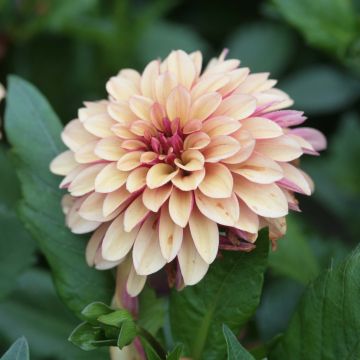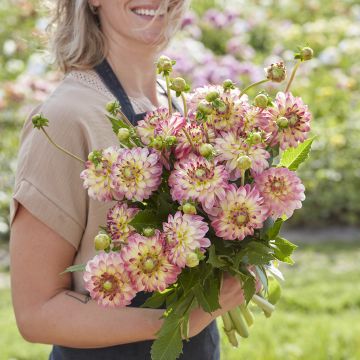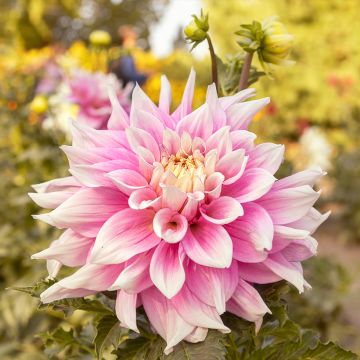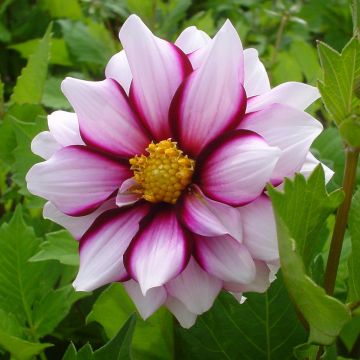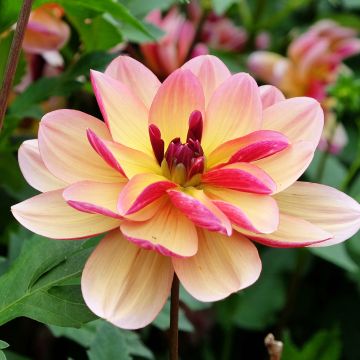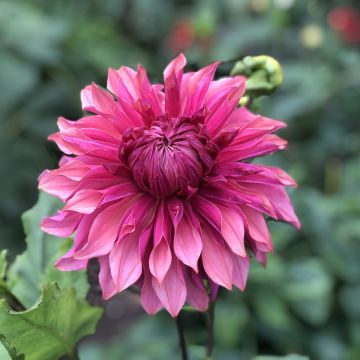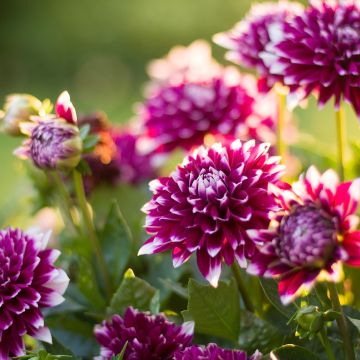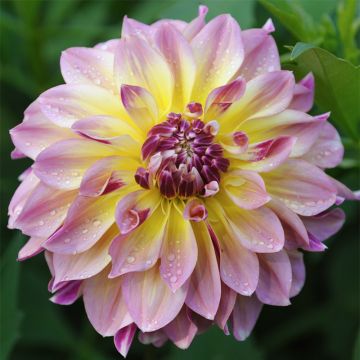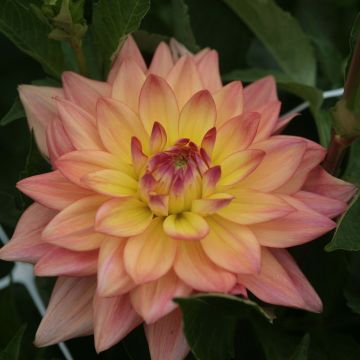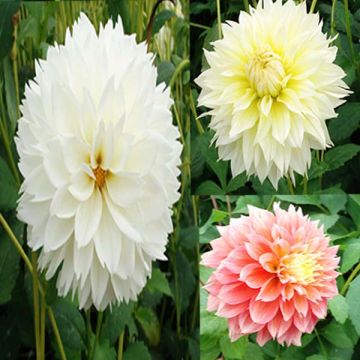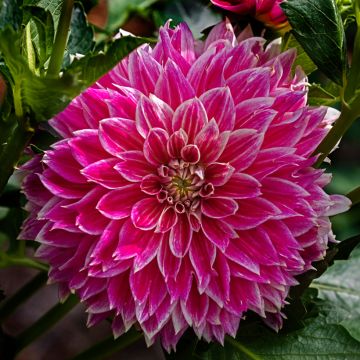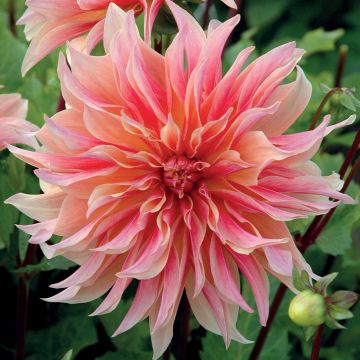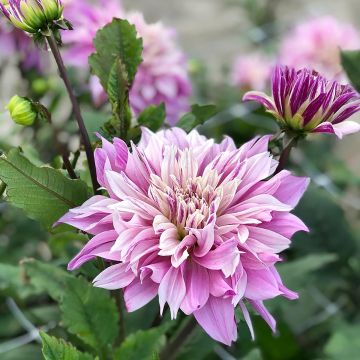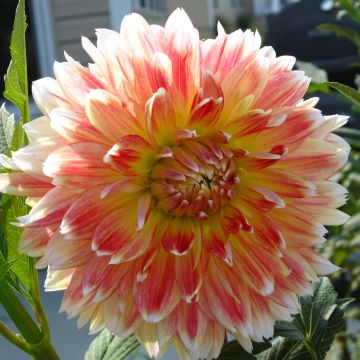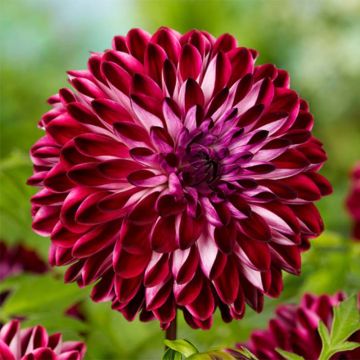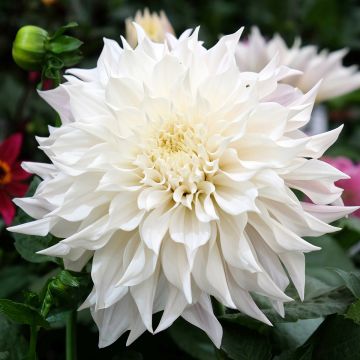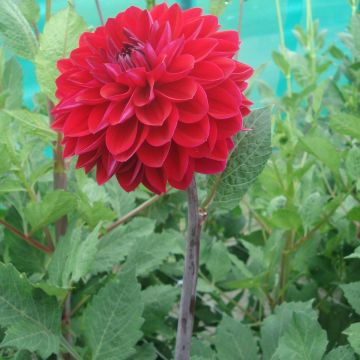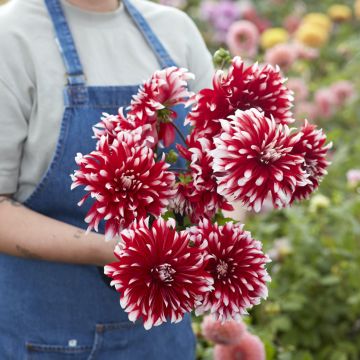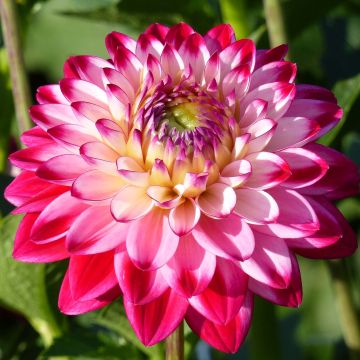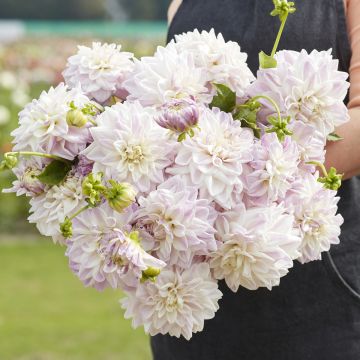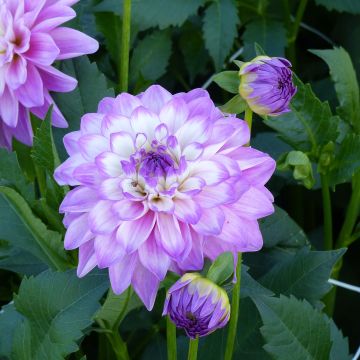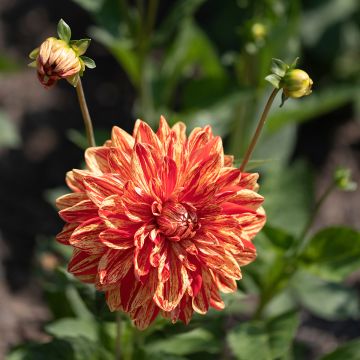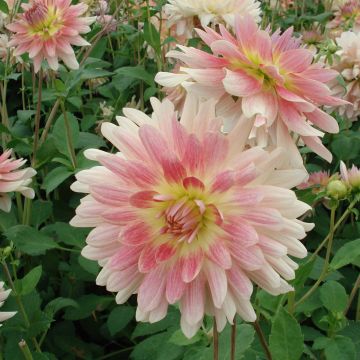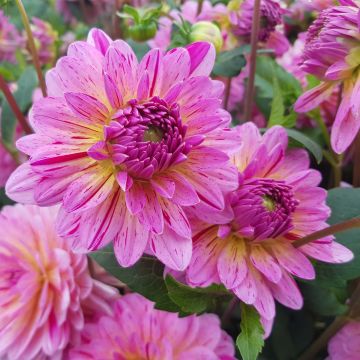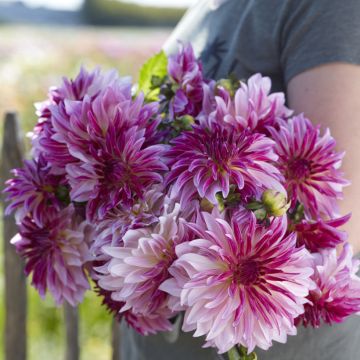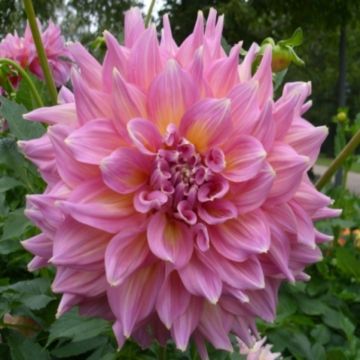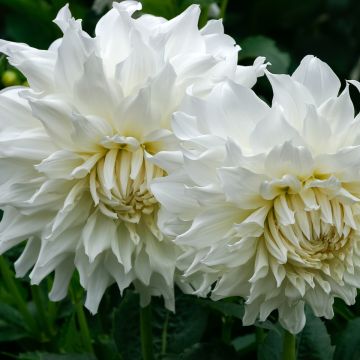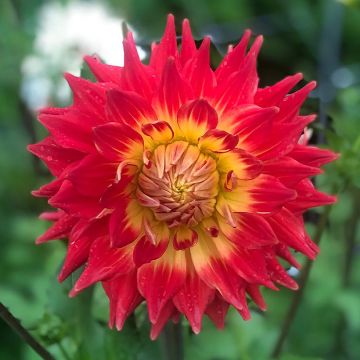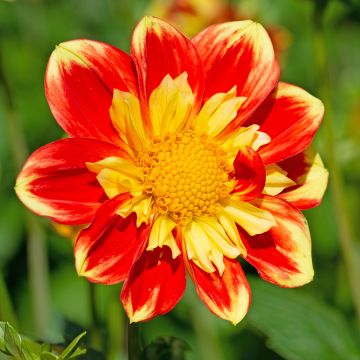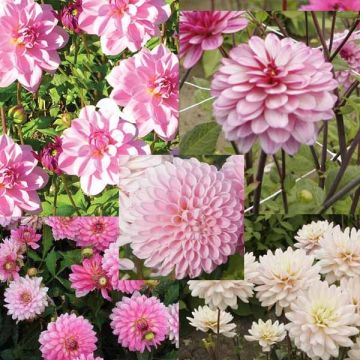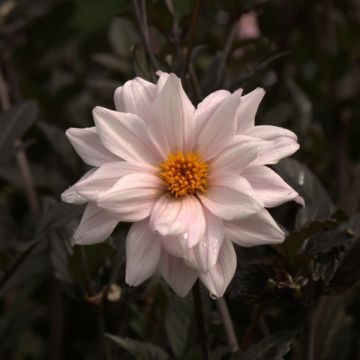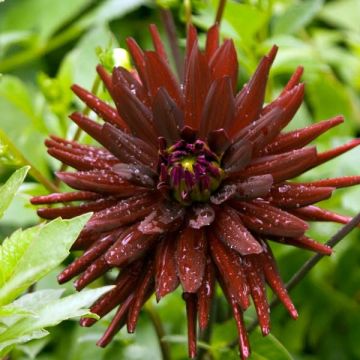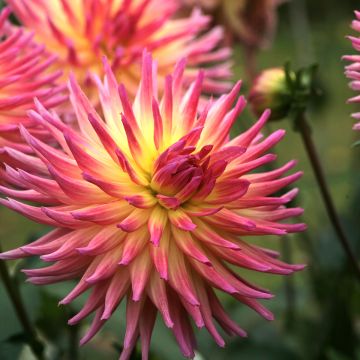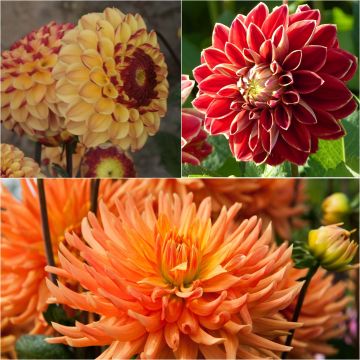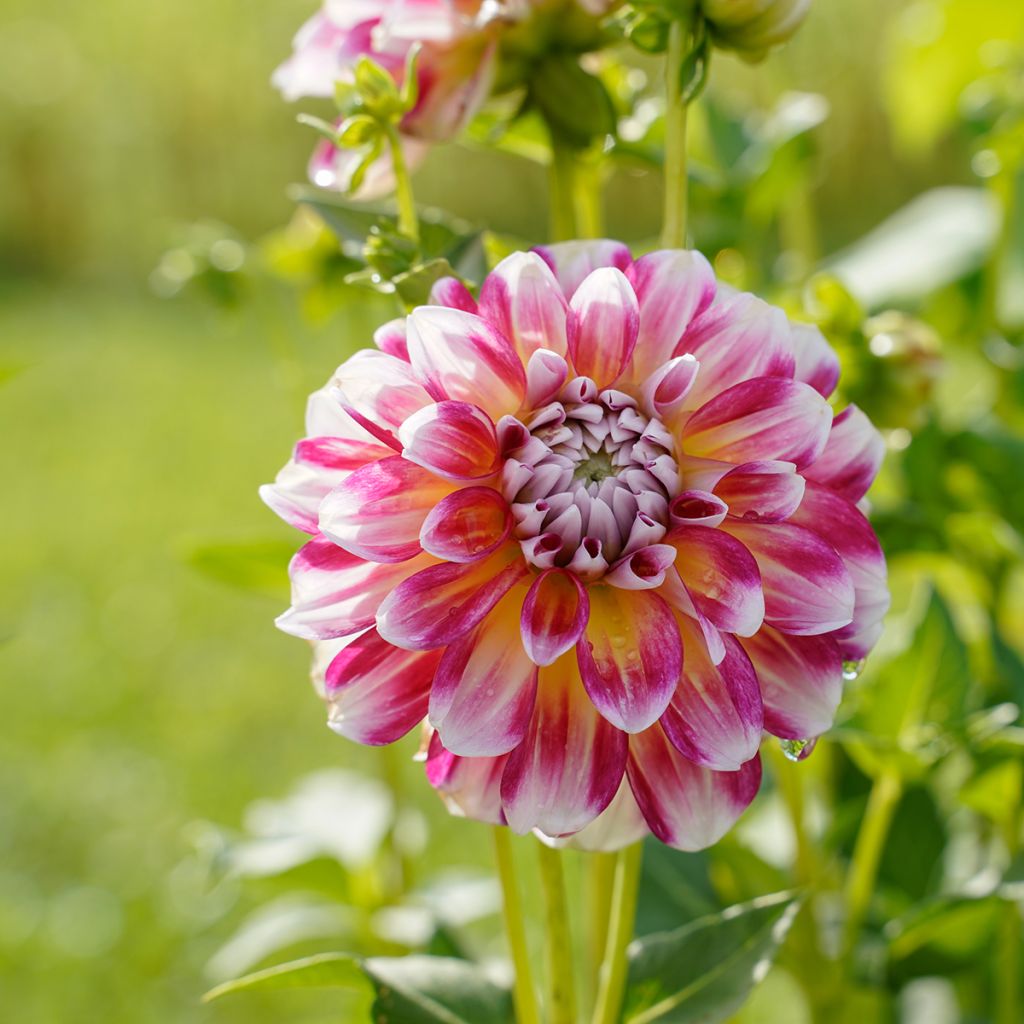

Dahlia Hawaii
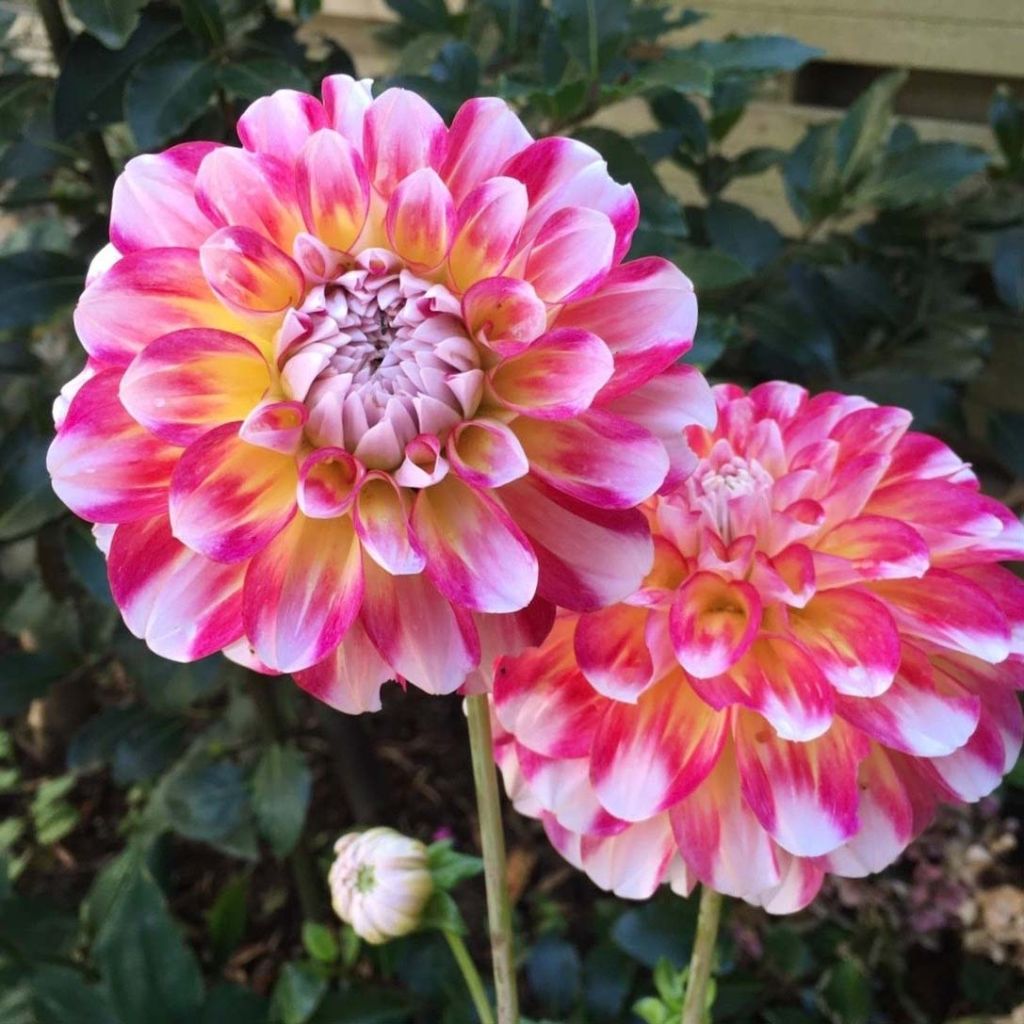

Dahlia Hawaii
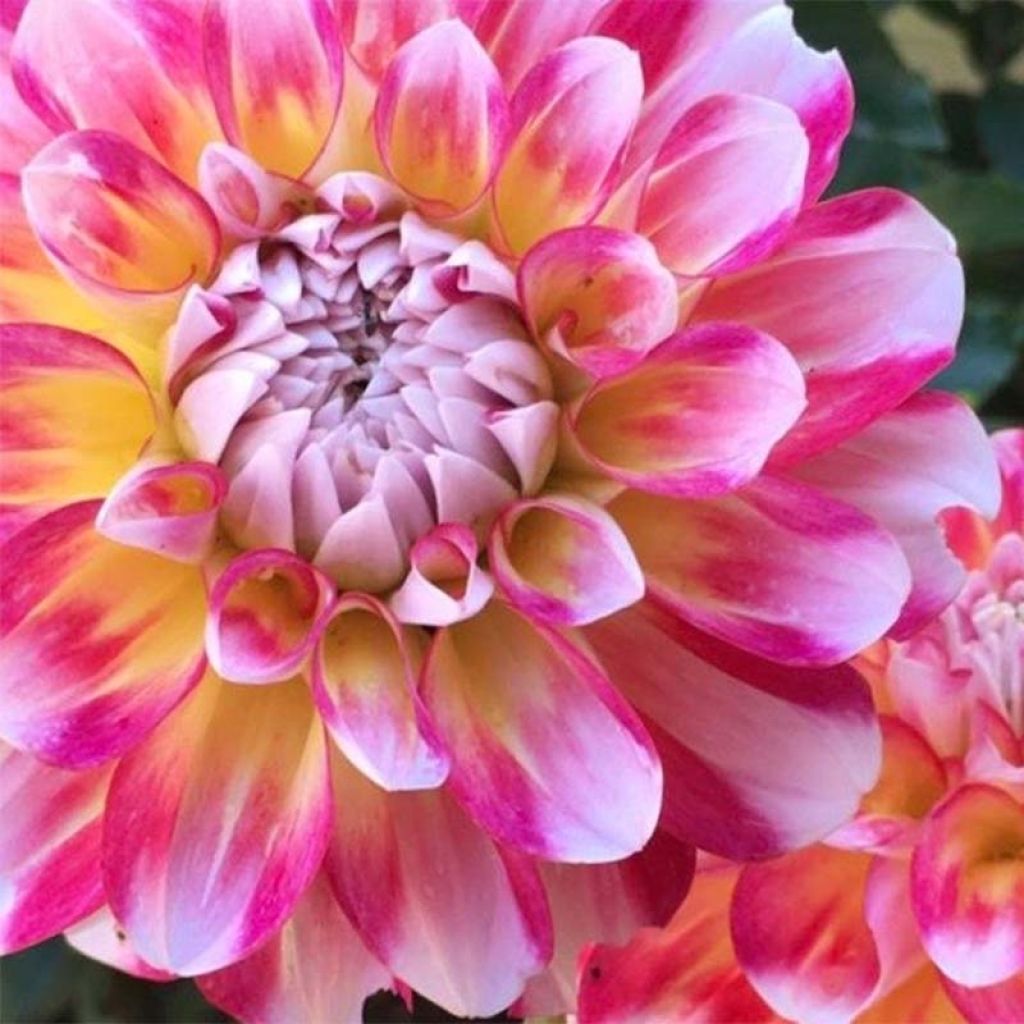

Dahlia Hawaii
Dahlia Hawaii
Dahlia Hawaii
Dahlia
Why not try an alternative variety in stock?
View all →Order in the next for dispatch today!
Dispatch by letter from €3.90.
Delivery charge from €5.90 Oversize package delivery charge from €6.90.
More information
This item is not available in your country.
Schedule delivery date,
and select date in basket
This plant carries a 6 months recovery warranty
More information
We guarantee the quality of our plants for a full growing cycle, and will replace at our expense any plant that fails to recover under normal climatic and planting conditions.
From €5.90 for pickup delivery and €6.90 for home delivery
Express home delivery from €8.90.
Does this plant fit my garden?
Set up your Plantfit profile →
Description
The 'Hawaii' Dahlia, with its large multicoloured flowers that appear to be painted, possesses an irresistible tropical charm. The soft pink, raspberry red, vanilla, and lemon yellow blend together in its petals, creating a harmony of colours that is reminiscent of the Impressionist style. They attract all eyes in the garden and allow for trendy bouquet arrangements. With a beautiful stature, the plant will charm in large flower beds, among bushes or tall grasses.
Dahlias belong to the Asteraceae family and are originally native to the high plateaus of Mexico. Currently, the approximately 25,000 horticultural varieties obtained by humans have invaded, to our great pleasure, gardens all over the world.
The 'Hawaii' variety, recently introduced to the horticultural market, is classified among the Decorative Dahlias, which is a horticultural category defined by the flower shape. In this group, the colourful ligules of the capitulum are regularly arranged in a spiral, they can be curved towards the stem or even fringed, for example. In this variety, the inflorescences in capitula are approximately 14-15cm in diameter and their ligules or petals are more or less tubular. The flowering period is from July to October. The habit is bushy, upright, and the plant reaches approximately 1.20m (4ft) in height when flowering, with a width of 70cm (28in). The highly branched stems are hollow and the leaves are opposite, pinnately divided into 3 or 5 deeply toothed lobes. The leaves and stems are quite light green in this variety.
To promote repeat flowering, take care to remove faded flowers, or even better, regularly create large colourful bouquets by combining it with other varieties. 'Hawaii' alone creates the backdrop for a dedicated flower bed, but its flowers will be enhanced by lighter and more discreet blooms, such as those of paniculate gypsophila, chamomiles or a linaria (Linaria purpurea 'Alba'). In flower beds, this dahlia pairs well with white paniculate phlox, tall pink or white foxgloves, and white, blue or purple autumn asters, for example. This variety with highly flowered stems allows for the addition of bouquets well into the late season.
As a star plant for borders and herb gardens, Dahlias confidently accompany the most beautiful flowers but are also appreciated alongside vegetable plants. In Mexico, this tuberous plant was initially cultivated as a root vegetable for consumption. However, its poor taste qualities assigned it the rank of an ornamental plant.
Report an error about the product description
Dahlia Hawaii in pictures
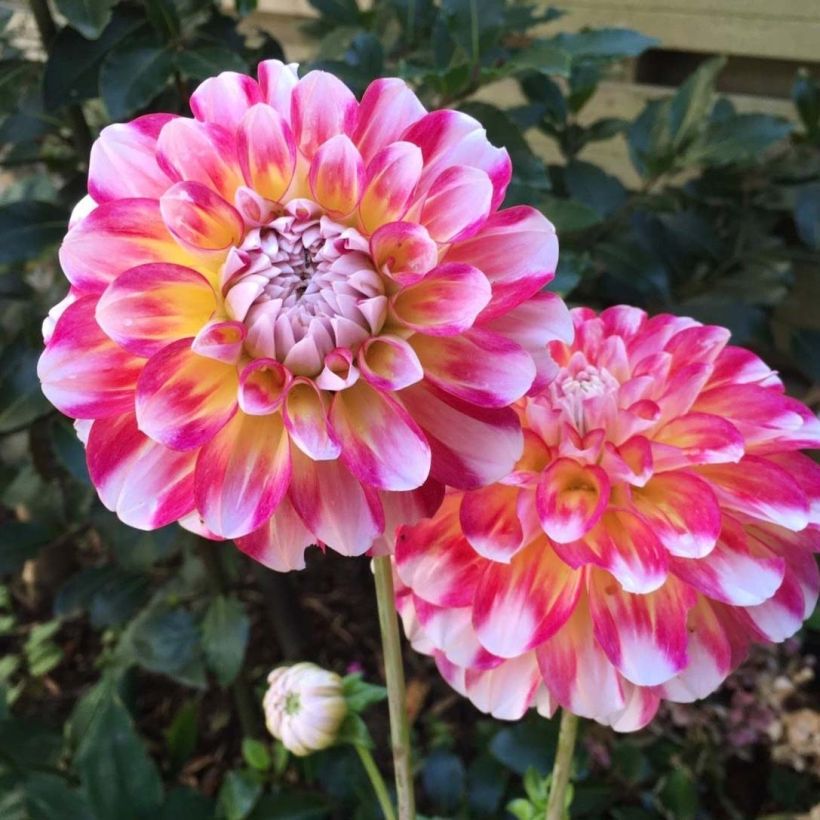

Plant habit
Flowering
Foliage
Botanical data
Dahlia
Hawaii
Asteraceae
Dahlia
Cultivar or hybrid
Other Ornamental Dahlias
Planting and care
Dahlia 'Hawaii' is easy to grow in all regions. For abundant flowering, it is good to follow a few simple rules, plant the tubers in a sunny location as soon as the last frost has passed, rich, fresh and well-drained soils are perfect. However, stagnant moisture would promote tuber rot. Feel free to amend the soil with compost and sand if necessary. Work the soil deeply and enrich it, for example, with crushed horn or dehydrated blood. Place your tuber and crumble the soil well to fill without air pockets. Your dahlia should be covered with about 6cm (2in) of soil. At the end of planting, water once abundantly and then repeat this watering regularly during the first 6 weeks to aid in rooting.
Dahlias are sensitive to cold, they need to be overwintered. In November, the first frosts cause the foliage to blacken, this is the time to dig them up. Carefully unearth the tubers. Remove as much soil as possible. Let the foliage dry so that the tubers can replenish their reserves. Then cut the stems to 10cm (4in). Spread your bulbs in a box on newspaper. Store them protected from frost in a dry, cool and dark place, such as a frost-free garage or an attic, for example. In the southern regions, close to the coast, which experience very few days of frost per year, it is possible to leave them in place. In this case, simply cover the ground with a layer of leaves or straw for protection.
Planting period
Intended location
Care
This item has not been reviewed yet - be the first to leave a review about it.
Dahlias
Haven't found what you were looking for?
Hardiness is the lowest winter temperature a plant can endure without suffering serious damage or even dying. However, hardiness is affected by location (a sheltered area, such as a patio), protection (winter cover) and soil type (hardiness is improved by well-drained soil).

Photo Sharing Terms & Conditions
In order to encourage gardeners to interact and share their experiences, Promesse de fleurs offers various media enabling content to be uploaded onto its Site - in particular via the ‘Photo sharing’ module.
The User agrees to refrain from:
- Posting any content that is illegal, prejudicial, insulting, racist, inciteful to hatred, revisionist, contrary to public decency, that infringes on privacy or on the privacy rights of third parties, in particular the publicity rights of persons and goods, intellectual property rights, or the right to privacy.
- Submitting content on behalf of a third party;
- Impersonate the identity of a third party and/or publish any personal information about a third party;
In general, the User undertakes to refrain from any unethical behaviour.
All Content (in particular text, comments, files, images, photos, videos, creative works, etc.), which may be subject to property or intellectual property rights, image or other private rights, shall remain the property of the User, subject to the limited rights granted by the terms of the licence granted by Promesse de fleurs as stated below. Users are at liberty to publish or not to publish such Content on the Site, notably via the ‘Photo Sharing’ facility, and accept that this Content shall be made public and freely accessible, notably on the Internet.
Users further acknowledge, undertake to have ,and guarantee that they hold all necessary rights and permissions to publish such material on the Site, in particular with regard to the legislation in force pertaining to any privacy, property, intellectual property, image, or contractual rights, or rights of any other nature. By publishing such Content on the Site, Users acknowledge accepting full liability as publishers of the Content within the meaning of the law, and grant Promesse de fleurs, free of charge, an inclusive, worldwide licence for the said Content for the entire duration of its publication, including all reproduction, representation, up/downloading, displaying, performing, transmission, and storage rights.
Users also grant permission for their name to be linked to the Content and accept that this link may not always be made available.
By engaging in posting material, Users consent to their Content becoming automatically accessible on the Internet, in particular on other sites and/or blogs and/or web pages of the Promesse de fleurs site, including in particular social pages and the Promesse de fleurs catalogue.
Users may secure the removal of entrusted content free of charge by issuing a simple request via our contact form.
The flowering period indicated on our website applies to countries and regions located in USDA zone 8 (France, the United Kingdom, Ireland, the Netherlands, etc.)
It will vary according to where you live:
- In zones 9 to 10 (Italy, Spain, Greece, etc.), flowering will occur about 2 to 4 weeks earlier.
- In zones 6 to 7 (Germany, Poland, Slovenia, and lower mountainous regions), flowering will be delayed by 2 to 3 weeks.
- In zone 5 (Central Europe, Scandinavia), blooming will be delayed by 3 to 5 weeks.
In temperate climates, pruning of spring-flowering shrubs (forsythia, spireas, etc.) should be done just after flowering.
Pruning of summer-flowering shrubs (Indian Lilac, Perovskia, etc.) can be done in winter or spring.
In cold regions as well as with frost-sensitive plants, avoid pruning too early when severe frosts may still occur.
The planting period indicated on our website applies to countries and regions located in USDA zone 8 (France, United Kingdom, Ireland, Netherlands).
It will vary according to where you live:
- In Mediterranean zones (Marseille, Madrid, Milan, etc.), autumn and winter are the best planting periods.
- In continental zones (Strasbourg, Munich, Vienna, etc.), delay planting by 2 to 3 weeks in spring and bring it forward by 2 to 4 weeks in autumn.
- In mountainous regions (the Alps, Pyrenees, Carpathians, etc.), it is best to plant in late spring (May-June) or late summer (August-September).
The harvesting period indicated on our website applies to countries and regions in USDA zone 8 (France, England, Ireland, the Netherlands).
In colder areas (Scandinavia, Poland, Austria...) fruit and vegetable harvests are likely to be delayed by 3-4 weeks.
In warmer areas (Italy, Spain, Greece, etc.), harvesting will probably take place earlier, depending on weather conditions.
The sowing periods indicated on our website apply to countries and regions within USDA Zone 8 (France, UK, Ireland, Netherlands).
In colder areas (Scandinavia, Poland, Austria...), delay any outdoor sowing by 3-4 weeks, or sow under glass.
In warmer climes (Italy, Spain, Greece, etc.), bring outdoor sowing forward by a few weeks.


































